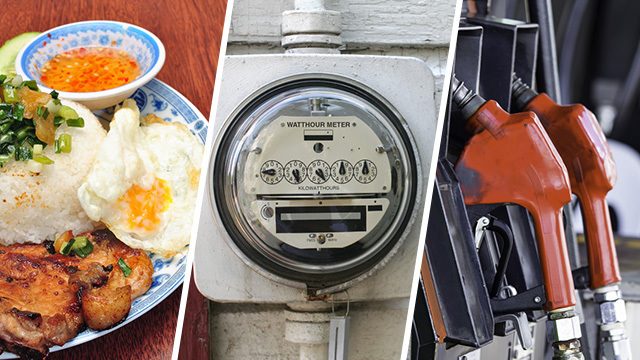SUMMARY
This is AI generated summarization, which may have errors. For context, always refer to the full article.

MANILA, Philippines – Despite the lower-than-expected Philippine inflation rate in May, economists say it will no longer go any lower because of strong pressures from the probable impact of drought, poor agricultural harvest, and election-related spending in the coming months.
“A low inflation rate is welcome news because it implies lower cost of doing business and greater purchasing power, among others,” University of Asia and the Pacific (UA&P) economist Cid Terrosa said in a text message to Rappler.
“It can also be an indicator of weakening demand which in this case may not be applicable,” Terrosa added.
Inflation, or the increase in prices of widely used goods, eased further last month to its slowest pace in at least two decades because of lower electricity and fuel costs, as well as controlled increase among food and non-alcoholic beverages.
Headline inflation rate eased to 1.6% in May, which is the third straight month of slowdown, the Philippine Statistics Authority (PSA) said. The National Economic and Development Authority (NEDA) meanwhile said this pace is the slowest since at least 1995.
Inflation rate was recorded at 2.2% the previous month and 4.5% in May 2014, according to PSA.
Good and bad implications
A research associate from Research, Education, and Institutional Development (REID) Foundation, Ronilo Balbieran, said in an email to Rappler: “Inflation hitting a 20-year low at 1.6% is surprising both in a good and a bad way.”
“Good because we know that this is a result of ‘cost-push’ deceleration of inflation due to supply-side improvement of the economy, with surpluses in food production were being reported, at the same time, oil prices have gone down benefiting the transport and logistics sector,” Balbieran said.
The lower-than-expected inflation rate, according to Balbieran, could also be bad for the economy “from the point of view of demand-pull inflation.”
“[This means] too low an inflation may also be a sign of a stagnant economy, with the people not that motivated and confident in spending. Remember that an economy’s growth always starts with consumption driven by the confidence of people on the present and the future,” he explained.
BSP unlikely to change interest rates
Despite the lower-than-expected inflation in May, HSBC economist Trinh Nguyen said the Bangko Sentral ng Pilipinas (BSP) is unlikely to cut interest rates.
A cut in policy rates means that those who want to borrow money enjoy lower interest rate. But this also means people who are lending money or buying securities have less opportunity to make income from interest.
“May CPI (Consumer Price Index) is below the BSP’s 2%-4% inflation target, but we do not expect the central bank to change rates in 2015,” Nguyen said.
“Domestic demand indicators remain robust, especially private consumption. External sectors, however, dragged down gross domestic product (GDP) in the first quarter of 2015. While rates may not change, slower growth and CPI may lead the BSP to be more tolerant of a weaker peso,” Nguyen explained.
Won’t go any lower
For Terrosa, “inflation rate won’t go any lower in the coming months because of strong inflationary pressures from the possible impact of drought, poor agricultural harvest, and election-related spending. Also, geo-political pressures can push commodity prices up.”
Rolando Dy, dean of the School of Management of UA&P, said in a text message that “continuous drought and rainy season can create price volatilities in the coming months.”
This means there could be an increase in inflation rate in the next months.
“With the expected better figures of GDP in the second and third quarters, inflation can increase to a healthy rate of 3.5%,” Balbieran said.
“There can be more stimulated demand, and inspiration of a better administration next year, without causing much trouble in our inflation,” he said.
Philippine economic growth in the first quarter of 2015 decelerated to a 3-year low of 5.2% year-on-year, as government spending stays weak and exports decline. – Rappler.com
Rice meal, electric meter, gasoline pump images from Shutterstock
Add a comment
How does this make you feel?
There are no comments yet. Add your comment to start the conversation.